By Laura Lindsey and Eric Richer et.al
It has been a little over two weeks since overnight low temperatures were <32°F throughout the state. These low temperatures can be cause for concern, but this concern may have been a bit premature. Now is a good time to scout wheat and barley fields to assess whether cold temperatures simply set back grain development, or whether they caused permanent damage.
1. Walk your field. Make sure to examine several areas within each field. There are micro-climates within a field, and small differences in temperature can cause large differences in damage and grain yield. Barley out of the boot is able to withstand canopy temperatures just below freezing for several hours. Damage from cold temperatures may cause yellowing or browning of leaf tips, but provides limited insight on grain yield potential.
2. Collect heads. Collect heads from both primary and secondary tillers. If there is cold damage, the extent will vary based on developmental stage at the time of the cold temperature/freeze event. Collect heads that look healthy and damaged for comparison. Healthy heads will appear unblemished, whereas freeze-damaged heads can have white spikelets and awns and may appear water-soaked. Depending on the extent of the freeze, damage may be patchy.
3. Look for symptomatic heads. In plant tissue, freeze damage occurs when ice forms in the intracellular spaces. The formation of intracellular ice can rupture cell membranes and sub-cellular structures causing fatal injuries to the cell. When the wheat plant is headed, symptoms of freeze damage include spikelets and awns that are white or bleached in color (Figure 1). Plants that have white awns may still have a developing kernel. However, when a spikelet was white, we noticed no developing kernel.
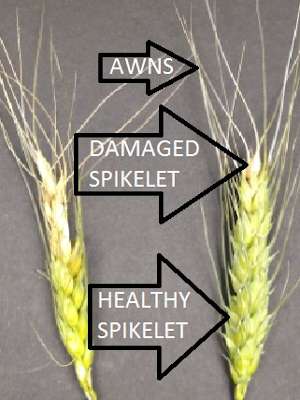
Figure 1. Small grain awns and spikelets appear white or bleached as a result of freeze damage.
4. Examine spikelets. Pull individual spikelets off of the small grain head. Figure 2 shows an individual spikelet. (This spikelet is from ‘Puffin’ winter malting barley. Other barley or wheat varieties may be awnless.) Examine spikelets from the top, middle, and bottom portion of the head. Flowering first begins at the middle of the head, then top, and finally the bottom portion. It is possible only a portion of the head to be damaged depending on which part of the head was flowering at the time of the cold temperature or freeze.
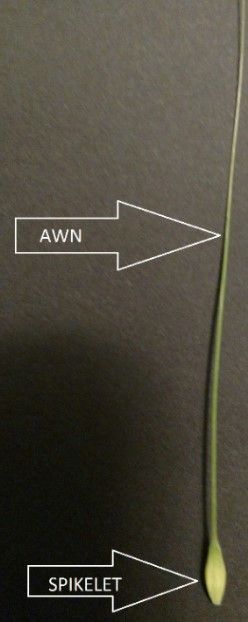
Figure 2. Individual spikelet from barley head.
5. Disect the spikelet. Disecting the spikelet is a much better way to examine if there is a developing kernel (grain) than simply feeling the head because just feeling the head for a developing kernel can be challenging when the kernel is small. The inside of a spikelet is shown in Figure 3. A healthy flower should have a stigma (female portion) that looks white and feathery. Anthers (male portion) may also be inside the spikelet or may have already been extruded from the spikelet. Figure 4 shows a healthy anther, stigma, and ovary removed from the spikelet.
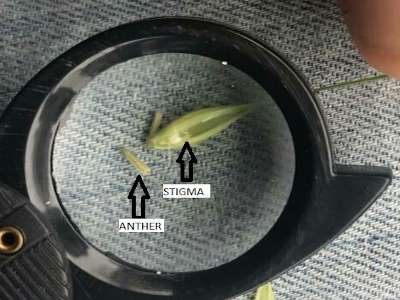
Figure 3. The spikelet should be dissected to examine the male (anther) and female (stigma) reproductive structures.
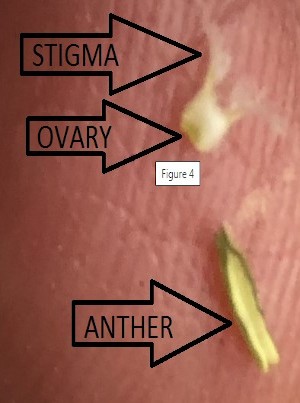
Figure 4. A healthy stigma, ovary, and anther that have been removed from an individual spikelet. This anther has been broken open, and shows that there is pollen production.
6. Look for developing kernel. Last week, in southern and central Ohio, developing kernels were observed within spikelets. Some of these developing kernels were still very small (which is why the spikelet needs to be dissected instead of just felt) (Figure 5). Other kernels were further along and larger (Figure 6). In northern areas, it may be too early to observe a developing kernel. Keep checking fields over the next few days.
In summary, the cold events of May 9-13 were a cause for concern. Producers and agronomists are encouraged to scout fields regularly to evaluate kernel development by dissecting spikelets. Based on our observations of fields in southern, central, and northern Ohio, pollination seems to have occurred and kernels are developing.
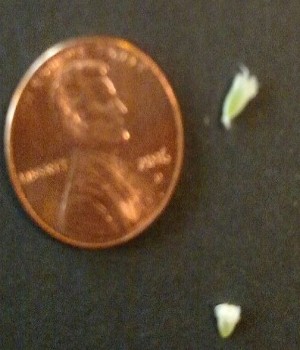
Figure 5. Small, but healthy developing kernels.
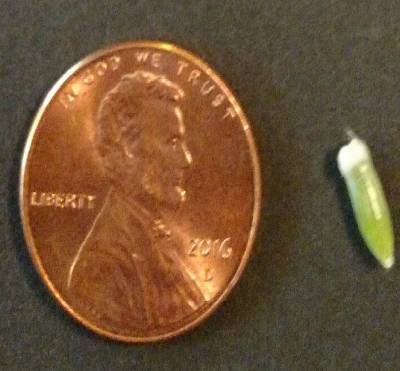
Figure 6. Larger developing kernel.
Source : osu.edu